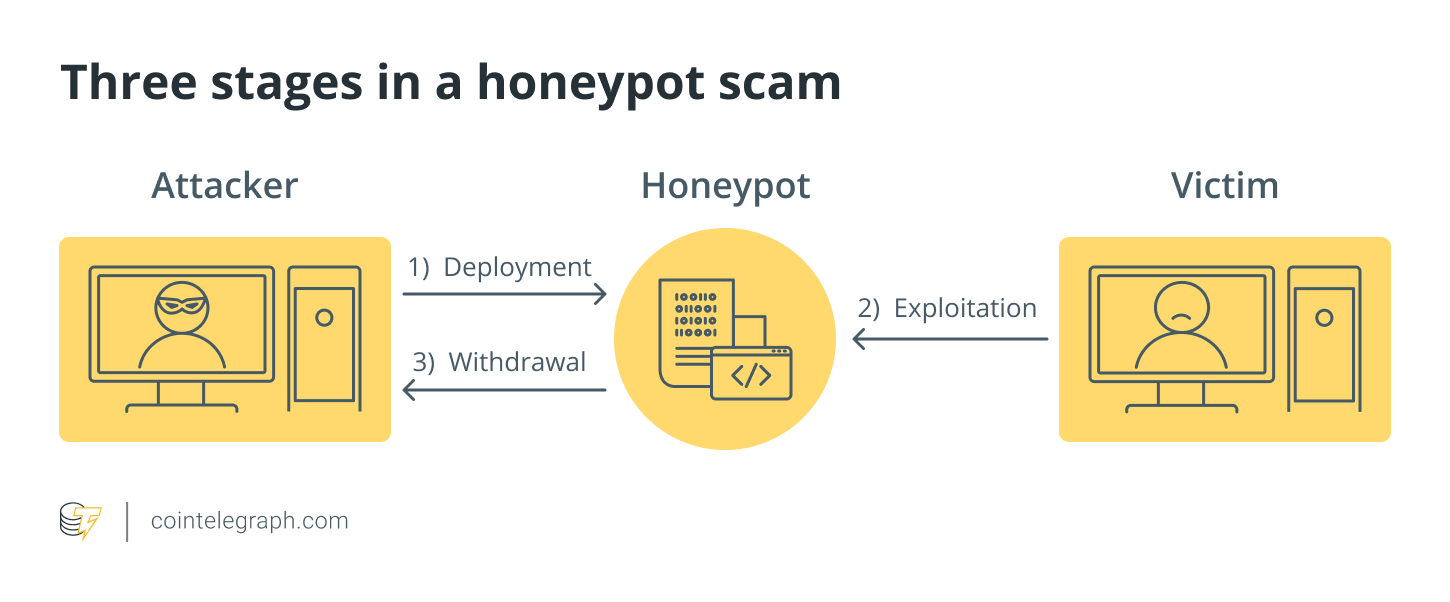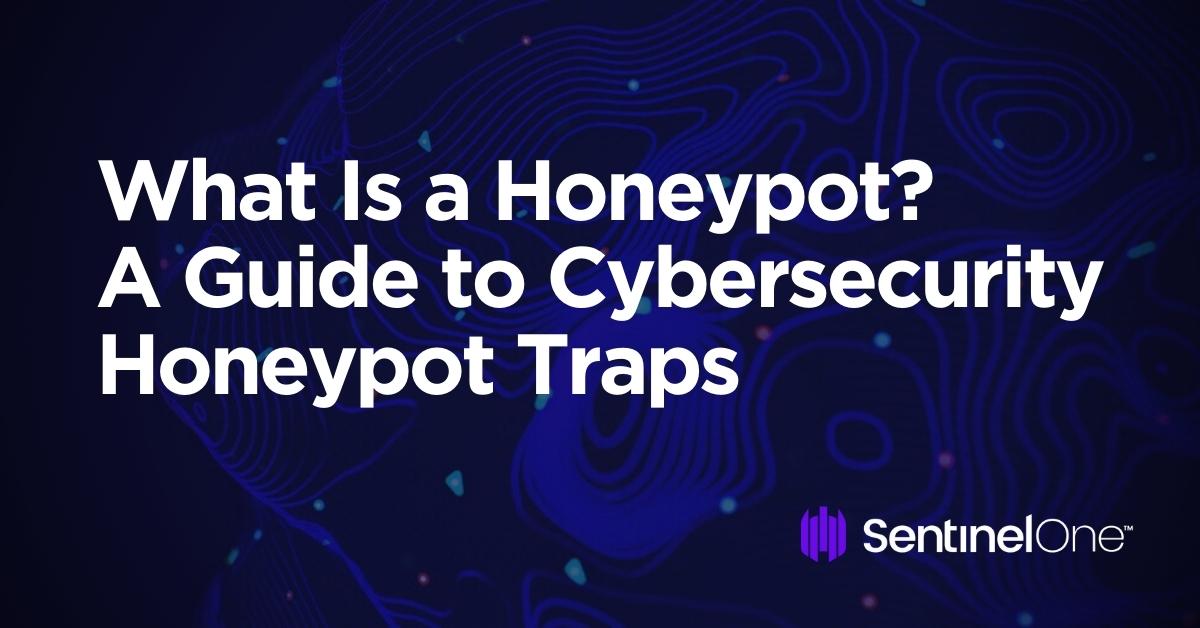“Honeypot Scams: A Comprehensive Guide
Related Articles Honeypot Scams: A Comprehensive Guide
- Kishu Inu (KISHU): A Deep Dive Into The Meme Coin Phenomenon
- Cryptocurrency: A Comprehensive Guide To The Digital Revolution
- Cryptocurrency: A Deep Dive Into The World Of Digital Finance
- Trading Volume: A Comprehensive Guide For Traders
- Polkadot: A Deep Dive Into The Multi-Chain Future Of Blockchain
Introduction
We will be happy to explore interesting topics related to Honeypot Scams: A Comprehensive Guide. Let’s knit interesting information and provide new insights to readers.
Table of Content
Honeypot Scams: A Comprehensive Guide

In the ever-evolving landscape of cryptocurrencies and decentralized finance (DeFi), new opportunities for financial gain emerge alongside novel methods of deception. Among the various scams that plague the crypto space, the "honeypot" scam stands out as a particularly insidious and sophisticated scheme. This article aims to provide a comprehensive understanding of honeypot scams, exploring their mechanics, warning signs, and preventive measures to help you navigate the treacherous waters of the crypto world with greater awareness and caution.
What is a Honeypot Scam?
A honeypot scam is a type of fraud in which a malicious actor creates a seemingly legitimate cryptocurrency token or project, enticing unsuspecting investors to put their money into it. However, once investors have bought the token, they find themselves unable to sell it, effectively trapping their funds within the honeypot.
The term "honeypot" is borrowed from cybersecurity, where it refers to a decoy system designed to attract and trap attackers. In the context of crypto, a honeypot scam lures investors with the promise of high returns, only to reveal its true nature once they are invested.
How Honeypot Scams Work
Honeypot scams rely on exploiting vulnerabilities in smart contracts, the self-executing agreements that govern cryptocurrency transactions. The scammers create a smart contract with hidden code that prevents investors from selling their tokens. This can be achieved through various methods, including:
-
Blacklisting: The smart contract may contain a blacklist of addresses that are prohibited from selling the token. The scammer can add investor addresses to this list, effectively preventing them from exiting the investment.
-
Whitelisting: Conversely, the smart contract may only allow a specific set of addresses to sell the token. The scammer controls this whitelist, ensuring that only they can profit from the scheme.
-
Tax Manipulation: The smart contract may impose extremely high taxes on sell transactions, making it economically unfeasible for investors to sell their tokens. For example, a 99% tax on sales would effectively wipe out any potential profits.
-
Function Restrictions: The smart contract may include functions that restrict or disable the ability to sell tokens under certain conditions. These conditions can be triggered by the scammer, effectively locking investors’ funds.
-
Hidden Backdoors: The smart contract may contain hidden backdoors that allow the scammer to drain the liquidity pool, leaving investors with worthless tokens.
Identifying Honeypot Scams: Red Flags to Watch Out For
Detecting honeypot scams can be challenging, as scammers often go to great lengths to make their projects appear legitimate. However, there are several red flags that can help you identify potential honeypots:
-
Unverified or Opaque Smart Contracts: A crucial step in identifying honeypot scams is to carefully examine the smart contract code. If the contract is not verified on a blockchain explorer like Etherscan or BscScan, it should raise immediate suspicion. Even if the contract is verified, it’s essential to review the code for any suspicious functions or restrictions on selling.
-
Unrealistic Promises: Be wary of projects that promise guaranteed high returns or exponential growth. These are often hallmarks of scams designed to lure in inexperienced investors.
-
Lack of Transparency: Legitimate projects typically have transparent teams, clear roadmaps, and active communities. If a project lacks these features, it may be a sign of a honeypot scam.
-
Aggressive Marketing: Scammers often employ aggressive marketing tactics to create hype and FOMO (fear of missing out). Be cautious of projects that rely heavily on hype rather than substance.
-
Low Liquidity: Low liquidity can make it difficult to sell tokens, even if the smart contract doesn’t explicitly prevent it. Be wary of projects with low trading volume and limited liquidity pools.
-
Centralized Control: If a single entity or small group controls a significant portion of the token supply or has excessive control over the smart contract, it may be a sign of a honeypot scam.
-
Honeypot Checkers: Use online honeypot checkers like Honeypot.is and StaySafu to determine the likelihood of a smart contract being a honeypot.
How to Avoid Honeypot Scams
Protecting yourself from honeypot scams requires a combination of due diligence, skepticism, and caution. Here are some practical steps you can take to minimize your risk:
-
Do Your Own Research (DYOR): Thoroughly research any project before investing. Read the whitepaper, examine the team, and assess the project’s potential.
-
Verify Smart Contracts: Always verify the smart contract on a blockchain explorer. If the contract is not verified, it’s best to avoid the project altogether.
-
Audit Smart Contracts: Look for projects that have had their smart contracts audited by reputable third-party firms. Audits can help identify potential vulnerabilities and backdoors.
-
Start Small: If you’re unsure about a project, start with a small investment to test the waters. This will limit your potential losses if the project turns out to be a scam.
-
Use a Burner Wallet: Consider using a separate wallet for interacting with new or unverified projects. This can help protect your main wallet from potential exploits.
-
Set Stop-Loss Orders: If you decide to invest in a high-risk project, set stop-loss orders to limit your potential losses.
-
Trust Your Instincts: If something feels too good to be true, it probably is. Trust your instincts and avoid projects that raise red flags.
Examples of Honeypot Scams
Numerous honeypot scams have been uncovered in the crypto space, each with its own unique characteristics. Some notable examples include:
-
Squid Game Token (SQUID): This token was based on the popular Netflix series "Squid Game." Investors flocked to the token, driving its price up rapidly. However, they soon discovered that they were unable to sell their tokens, as the smart contract contained a hidden function that prevented selling.
-
Save the Kids (KIDS): This token claimed to donate a portion of its proceeds to children’s charities. However, it was later revealed to be a honeypot scam, with investors unable to sell their tokens.
-
Various Meme Coins: Many meme coins have been launched as honeypot scams, capitalizing on the hype and speculation surrounding the meme coin market.
Conclusion
Honeypot scams are a serious threat to investors in the cryptocurrency space. By understanding how these scams work, recognizing the red flags, and taking preventive measures, you can significantly reduce your risk of falling victim to these schemes. Remember to always do your own research, verify smart contracts, and exercise caution when investing in new or unverified projects.
The crypto world is full of opportunities, but it’s also fraught with risks. By staying informed and vigilant, you can navigate the crypto landscape with greater confidence and protect your hard-earned investments.

